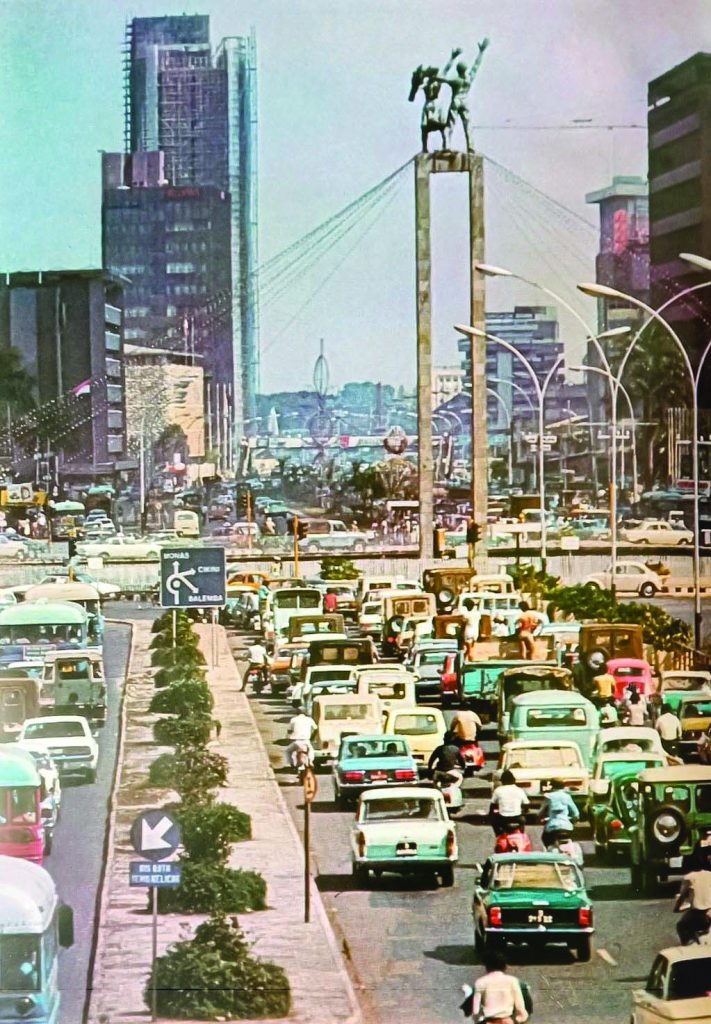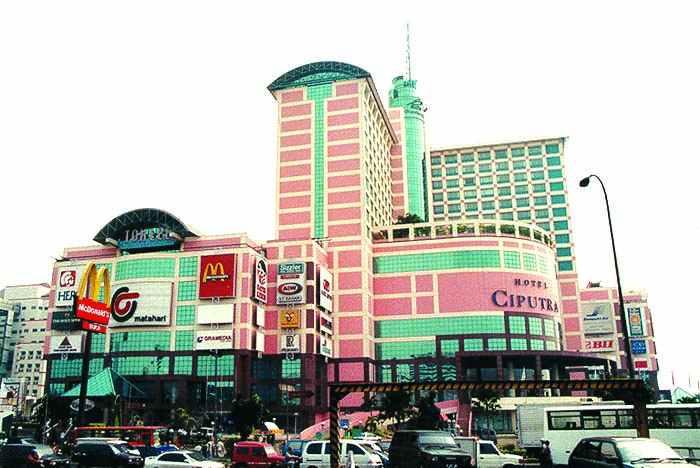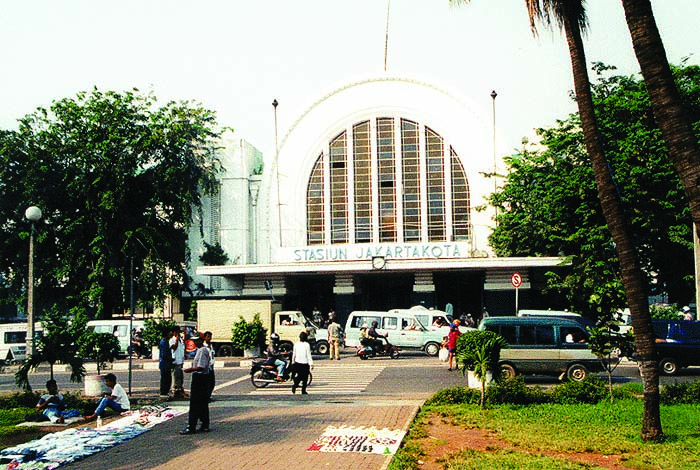
Arriving in Jakarta in December 1978 to start work in the rather undeveloped Indonesia insurance industry was an absolute culture shock, especially after the refined and gentrified world of Lloyds of London and a flat in New Kings Road. The plane arrived in Kemayoran Airport, which is now a centre for business and conventions (but you can still see the old runway down the middle) and I was immediately struck by the then pervasive and totally alien smell of kretek cigarettes. Something you rarely smell today in “Vape Country” which has taken over after 30 years of ‘Marlboro Country’. Now very few people I know smoke. Back then everybody did – including me.
started work in my office at the edge of the infamous ‘Blok M’ with nothing to connect me to the head office in London but a telex machine and operator connected calls booked 2 days in advance! Most of you will not know what a telex machine is but I loved it and depended on it totally, until the even more wonderful fax was introduced perhaps ten years later. Still no clue about these breakthrough technologies? Going from pre-booked, crackly calls to instant WA and Zoom calls perhaps is the greatest difference between then and now. But maybe not. My mind is beginning to come alive with some marvellous old images which contrast brilliantly with today’s city.
Shopping was a real disaster in those days. It wasn’t really shopping it was searching. There was one supermarket called Gelael (the owner went to prison some years later for something quite serious, if I remember correctly) but there were virtually no imported goods, no cheese, no sausages, and no decent bread! Then KemChicks opened in Kemang and the expat community gave a huge sigh of relief and flocked to its packed aisles.
But there was virtually no wine and spirits available. Bintang and Anker were our staple diet except if you could talk your way into the Duty Free Shops, or if, like me, you found the wine smugglers in Pasar Cikini! Actually, I think they must have stolen the wine from the ships in Tanjung Priok because they used to sell all bottles at the same price. That’s the only time I’ve ever had had a cupboard full of Chateau wines!


Today there are over 100 malls in Greater Jakarta with every form of food and drink from around the world, all easily accessed in air-con comfort, so why do I sometimes miss those tough old days? Maybe there was a character, a sense of adventure that has been lost in today’s sanitised society?
Then there was the dining scene, or should I say the complete lack of it. Our choices were the five star hotels – of which there were only three – the Borobudur Sheraton, The Sahid Jaya and Mandarin Oriental, which was just completed in 1978, and apart from that, we had the amazing “Art and Curio” Restaurant, actually an antique shop which served ‘western’ food, including one of my favourites ‘Chicken Bifstek’ which was served by equally antique waiters who had been left the restaurant when the Dutch owner died. A real experience. Then came the ‘Oasis’ owned by the Tirtawisata family who founded the‘Aqua’ water company, which was where everyone went to celebrate or entertain. They had a Keroncong band, a Batak Trio, and a jazz band, and the amazing ‘Ristafel’ buffet which had to be served by 12 virgins! Hard to achieve these days, and as for the latter, certainly for the best.
But now we have the Ismaya and Union groups creating interesting concepts everywhere, we have Starbucks in every mall and office block, we have Amuz, Le Quartier and Turkuaz. We are truly spoiled.
Weekends we went out of town. We all had wooden shacks on Sambolo beach where we spent the weekend barbecuing and drinking beer. We went to Pelabuhan Ratu for the great seafood at the cliff top hotel Bayu Amerta. And we rented old Dutch houses in Puncak surrounded by hectares of peaceful fields and forests. It was cool and quiet. Now the west coast is packed with family resorts, none with the charm of Sambolo or the Krakatau Beach Hotel. Likewise Pelabuhan Ratu has been somewhat ‘developed’ and Ocean Queen hotel surrounded. While in Puncak hardly a square metre has been left in its natural state and the roar of the local custom motorcycles fill the air., and views have been covered and blocked. Some changes are simply not for the better.

Now we get to traffic. I used to drive from Bintaro to Tebet in 12 minutes. Okay that was at night, but we were happy to get in our cars and drive to Cafe Batavia in Taman Fatahillah for a drink or to Ancol for a massage in the tents on the beach at 9pm or 10pm. The city was accessible and great to explore. That is another story perhaps left untold! Now we have super highways and MRT/LRT but the traffic is simply too much to bear. The motorcycles dominate the streets which themselves have simply not kept pace with the number of vehicles. We have a problem which does not seem to be being solved, and that restricts our enjoyment of the city and our exploration of it. A serious pity because there is so much to discover.
Another visual change has been the way Indonesians embraced Islam. When I arrived, this was a particularly unique Javanese interpretation of the religion. The peci hats worn by men; and the women, elegantly donning sarong and kebayas on a daily basis, with delicately embroidered scarves worn loosely atop their heads; or, the younger women still showing off their flowing locks of thick Javanese hair. By no means was the past less pious, but it certainly achieved it with a more localised Indonesian identity.
The second is censorship: when I arrived, there was active and visible censorship of the media… in fact, of everything! The censors blacked out portions of almost every newspaper and magazine every day, every week. There was no freedom of speech and no criticism of the Government or the President was allowed. Now thanks to Presidents GusDur and Habibie, we have full freedom of expression. Marvellous. However due to the slow decline of fact-driven news media, such as Tempo, Kompas and Jakarta Post in particular, and the rise of the unchecked, opinionated and often totally misguided social media, our freedom of expression has been badly mismanaged. 90% of the nonsense spouted on ‘Sos Med’ should certainly be blacked out these days, but that is the price of freedom!

Let me finish with a few ‘things we have lost’ and ‘things we have gained’:
We lost the banshees (i.e bancis) of Jl. Latuharhari, Jakarta’s famous “ladyboys” (as they were called) have gone! To where, I don’t know. But they were entertaining, and meant to be, and were actually a tourist attraction back 40 years ago. Becaks, the bicycle taxis powered by old men with push bikes. They certainly gave the city a unique visual appeal, but certainly wouldn’t survive the city streets today! Clean air. Clean water. Local culture.
In that time we’ve gained democracy (hurray!), great hotels and restaurants, good wines and spirits, locally made cheese, parks made by Ahok, internet, cable TV and good air conditioning, world-class schools, western culture and fashion, English language everywhere, bicycle lanes. Not all of these are good, of course, but they have become a part of Jakarta.
What do I miss the most? The sense of difference, the sense of adventure, the pervasive culture, the simplicity of life. But here we are celebrating 15 years of NOW! Jakarta, after 15 years before that with Jakarta Java Kini. I have been and am still, blessed to be here.







